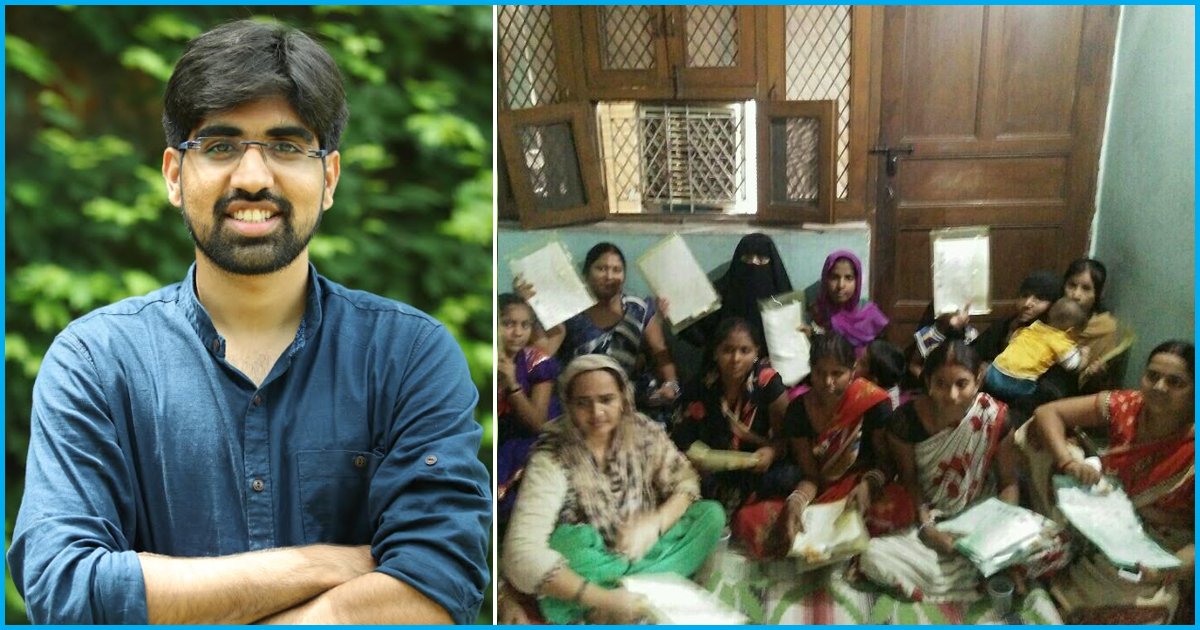
An Engineer Is Ensuring Better Childhood For Kids From 200 Families Through Parental Help
25 Jan 2018 11:01 AM GMT
The word Saarthi translates to charioteer in English and the imagery which instantly comes to our minds is that of Arjun going to the war of Kurukshetra accompanied by Krishna. Krishna, the enabler, is often attributed to the win of the Pandavas in the battle.
Drawing reference to the mythology is relevant in this case, as the organisation Saarthi, based out of Delhi, also is an enabler of bringing a change in how parents, specifically from the lower economic background, can shape the lives of children and bring a positive impact right at the growing up years.
Saarthi, the NGO has been founded by Ankit Arora, a former Teach For India fellow. He is a qualified engineer and has worked in close quarters with the education sector prior to founding Saarthi. It was during his stint with Centre Square Foundation that he came to terms with the importance of parental intervention in the overall growth and performance of the child.
Though in the developed countries, there were organisations who were working with parent intervention, Indian educational scenario never laid any stress. He decided to do something in this area and create a sustainable model which could also be impactful and could be scalable across the country, to bring to positive change.
When The Logical Indian spoke to him, he said, “Our main motto behind setting up the organisation is to create meaningful experiences for our slightly less privileged brothers and sisters. We want to replicate the same meaningful experiences which were privileged enough to gain, as we grew up through the help of our parents.”
Saarthi, an organisation which is over a year old now, works on the principle of importance parent intervention in the growing up phase of a child, specifically laying emphasis on the age groups below 12 years. Currently, they are working with 200 families in two communities of New Delhi, namely Azadpur community and Pul-Pralhadpur community.

Primary principles
The two paradigms qualitative and quantitative, are measurable in three section, that are academic development, socio-economic development and cognitive development. Academic development refers to the knowledge of the letter, socio-economic development can be tangible through morals, values and awareness of self-identity. Whereas, the cognitive development mainly focuses on brain development and development of cognitive abilities like critical thinking, to name one.

The Saarthi method
One might ask how are these paradigms tangibly converted by the parents to contribute to a holistic growth of the child? This is done through their simple yet extremely effective mode of intervention. The mode of intervention is three-fold and has a very simple form of implementation. Ankit said, “We initially had decided upon a smartphone based approach. But, in this case, our stakeholders are mothers from low-income groups. They often do not have the access to smartphones. So, our model is a feature-phone based.”
- The mothers are given Do It Yourself activity kits which are numbered serially. The first component of the model is a recorded call which the mothers receive on their phones. These calls last for a minute or two and it is mostly a trigger call and is instruction based and are call-to-action based on the activity kit. The mothers receive the pre-recorded call twice a week and they can opt for flexible time slots.
- The second component is a community relations manager. One of the mothers from the community is appointed as the community leader who ensures that the instructions given over the pre-recorded calls are followed and she also takes feedback. She gives the necessary motivation and support to the mothers in order to enable effective parenting. In lieu of her services, she is given some compensation. Role construction and regular follow-up is a part of her job as well. She takes up one live call every week.
- House visit is the final component of the model. To ensure a proper feedback mechanism, the community leader makes one house visit to the community members house every month. This ensures the smooth functioning of the intervention models.

Impact
The positive impact can be measured in terms of the behavioural and a visible change in the mentality of the stakeholders. He said, “Previously, mothers used to be very sceptical about how would entire process. But after a couple of months, we come across active participation from their side.” He cited one example, where the mother of the kid has effectively brought bed-time reading into practice. Taking the practice further, she bought a couple of books for the child, out of her own accord.
On a parting note, Ankit said, “Our initiative is at a very nascent stage. By the end of 2018, we aim at touching the lives of 10000 families. Later, we want to take the product at a smartphone-oriented approach and touching the lives of 1 million families is one of our long-term goals.” The Logical Indian community wholeheartedly applauds the efforts put in by Ankit through the help of Saarthi. He is an inspiration for all of us.
Click here to know more about the organisation
With #MySocialResponsibility, we aim to bring you more inspiring stories of individuals and organisations across the globe. If you also know about any changemakers, share their story at [email protected] and we'll spread the word.
 All section
All section













